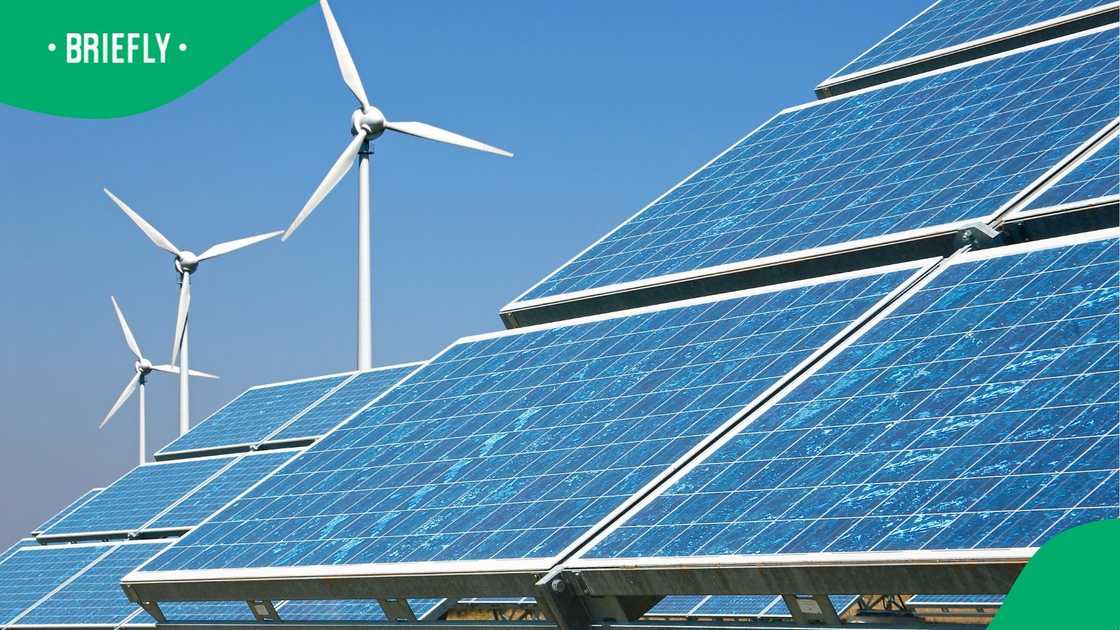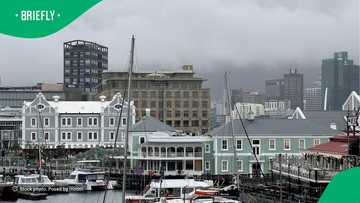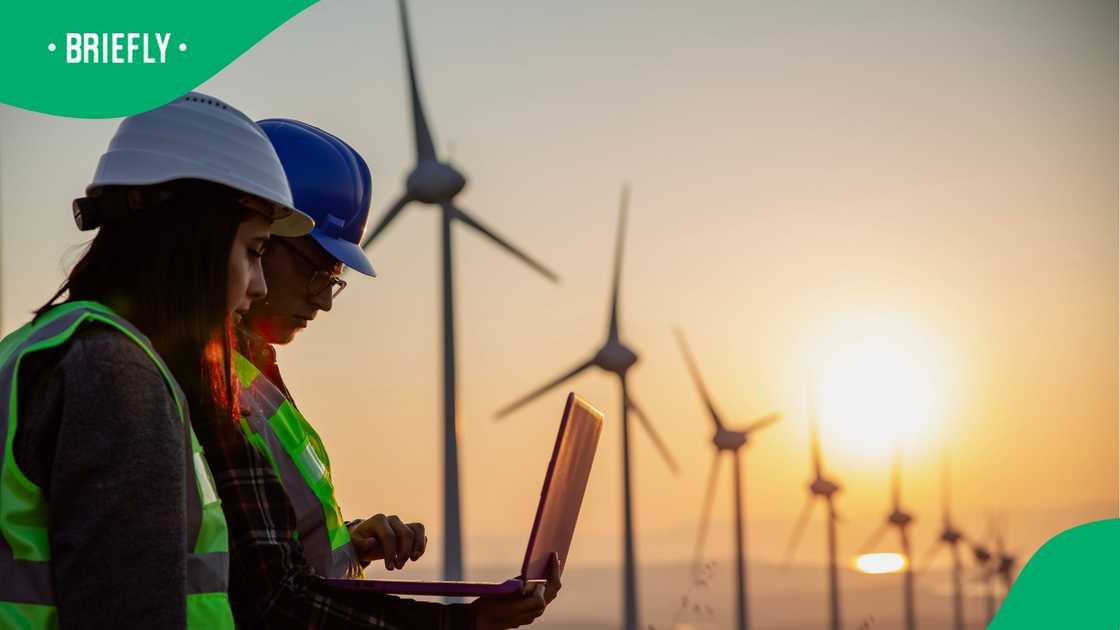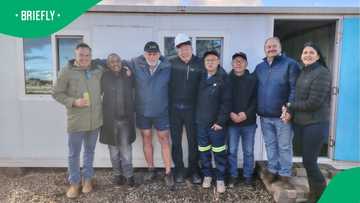South Africa’s Renewable Energy Pivot: Hurdles, Hope and the Road Ahead
- South Africa’s reliance on fossil fuels, particularly coal, remains one of the country's biggest contributors to climate change
- As the planet warms and extreme weather intensifies, the cracks in the coal-heavy power model are beginning to widen
- Kyle Durham, Sustainability Head at FNB Commercial, spoke to Briefly News about South Africa's transition from coal-based electricity to renewable energy
PAY ATTENTION: You can now search for all your favourite news and topics on Briefly News.
Kyle Durham is a qualified Chartered Accountant with a passion for entrepreneurship, technology, and unlocking future opportunities.

Source: Getty Images
A new wave of market liberalisation, backed by private-sector investment and changing policy, is reshaping the country’s energy future. According to Kyle Durham, Sustainability Head at FNB Commercial, the shift away from fossil fuels is both a critical challenge and a unique opportunity.
“Energy can no longer be a side issue within a business, it must be addressed strategically and in context,” Durham said.
The Coal Barrier
Transitioning from coal has not been straightforward. While solar and wind are the most widely adopted renewable sources, they’re intermittent and can’t meet base load requirements. Less common technologies like hydro, biomass, and Concentrated Solar Power (CSP) offer more reliable energy output but come with high costs and technical barriers.
PAY ATTENTION: Briefly News is now on YouTube! Check out our interviews on Briefly TV Life now!
Another major bottleneck is the national grid. Grid constraints in the Northern, Western, and Eastern Cape have stalled several large-scale renewable energy projects that are ready to begin construction. This has opened a window for small-scale embedded generation (SSEG) projects, but regulatory red tape and an inconsistent registration process remain stumbling blocks.
Private Sector Sparks a Shift
The private sector has emerged as a key player in the changing energy landscape, following the lifting of restrictions on electricity generation.
“The market liberalisation has allowed independent power producers to enter private power purchase agreements and enabled wheeling. This is already speeding up the delivery of green energy.”
A significant step forward was the relaxation of the 1MW generation cap in 2023. Since then, a surge in sub-10MW self-generation projects has helped inject an estimated 6GW into the national grid, according to Eskom. Combined with tax incentives, this shift has enabled more businesses and households to take control of their energy supply.

Read also
Cape Town’s infrastructure came under scrutiny after a viral TikTok showed widespread flooding in the city
Where the Investment Lies
South Africa’s Integrated Resource Plan (IRP) and research by GreenCape peg the combined market value of solar PV and wind energy at over R370 billion by 2030. For investors, the opportunities are vast, ranging from large-scale projects to supply chain development.
“There’s a strong case for innovation in funding structures and financial instruments to support the full energy value chain,” said Durham.
Closing the Access Gap
Despite progress, access and affordability remain major obstacles, especially for small and medium-sized enterprises (SMEs). To address this, FNB has launched FNB Energy Solutions, which installs renewable energy systems at business premises and sells the energy back to them. It’s an energy-as-a-service model that removes the capital burden from clients.
Traditional financing mechanisms like asset finance continue to support SMEs, alongside expert teams to guide investment decisions.
Energy Needs on the Farm
With the agricultural sector’s energy demand expected to double by 2030 in sub-Saharan Africa, investment in renewable infrastructure is urgent. But again, grid limitations are a roadblock.

Read also
South Africa secures $1.5 billion infrastructure loan from World Bank, SA worried it will be stolen
“Farmers are best positioned to adopt a hybrid approach, generating their solar power on-site and supplementing through wheeling at cost-effective tariffs .It’s about finding the lowest effective cost of electricity.”

Source: Getty Images
Tapping into Biogas
Biogas, produced from organic waste, offers 10 297MW of potential generation capacity, according to the World Bank. But market uptake remains limited.
“The technology needs to be demystified. With more education and scalable solutions, biogas could become a meaningful part of South Africa’s renewable energy mix.”
Strategy and Stability
Balancing energy optimisation with reliability and cost-efficiency is critical for business continuity. Durham stresses the importance of a clear energy strategy, supported by the right technology and finance partners.
“The transition is complex, but certainty in policy is crucial. Business owners and investors need stable, long-term frameworks to move forward confidently.”
Post-Election Outlook
While political shifts following the 2024 national elections will influence policy, Durham believes economic factors are now the primary drivers of energy reform.
“Renewables reduce costs, improve reliability, and offer strong returns on investment. Especially in the face of rising electricity prices and outages, solar PV and SSEG solutions make business sense.”
A Time-Sensitive Transition
Durham acknowledges that transitioning to a greener grid is not just an environmental issue, it’s an economic imperative.
“Our coal fleet is outdated, inefficient, and no longer viable. Renewables, supported by battery storage and gas, offer a realistic path forward. We must act now to lower costs and build a more resilient energy system,” He concluded.
Ramokgopa predicted a loadshedding-free winter
In a related article, Briefly News reported that Ramokgopa said the country would experience a loadshedding-free winter in 2025.
He said that the power plants are expected to perform at the same capacity as last year.
Disclaimer: The views and opinions expressed here are those of the author and do not necessarily reflect the official policy or position of Briefly News.
Source: Briefly News




